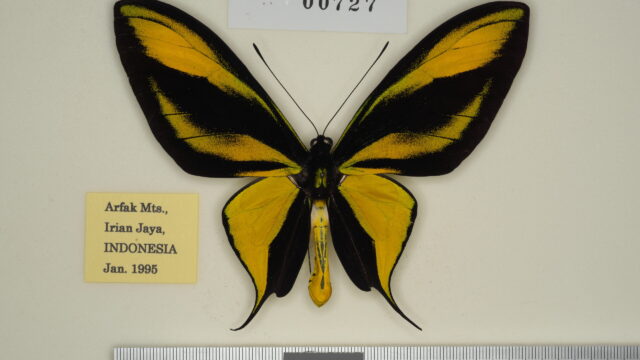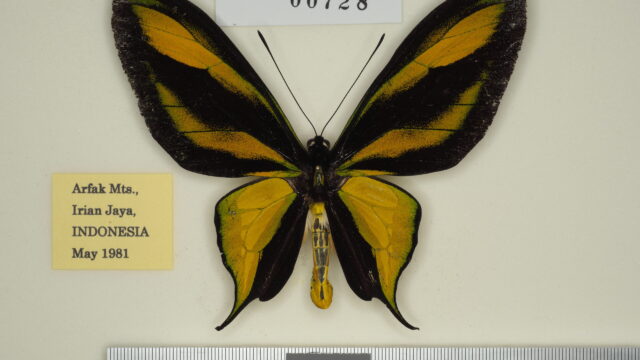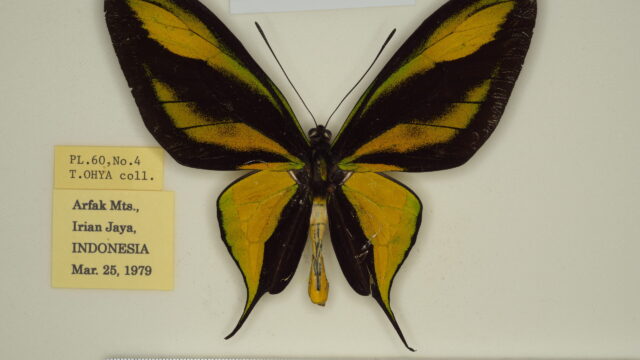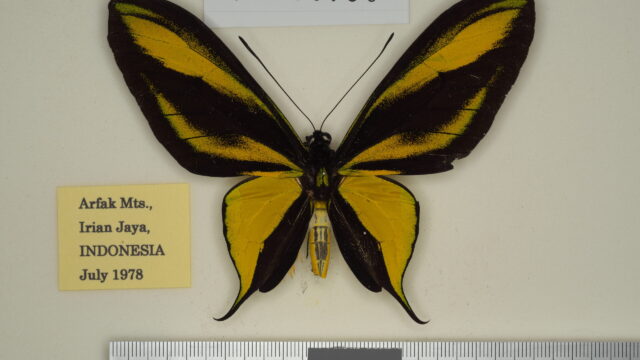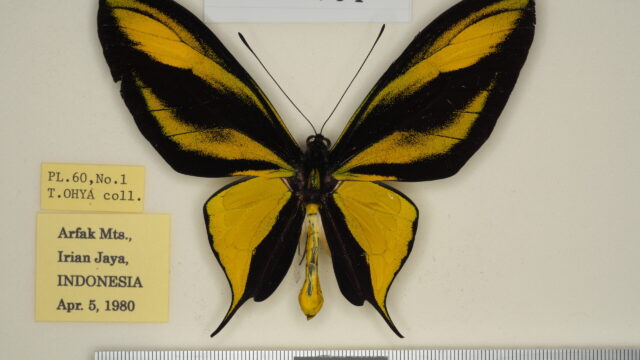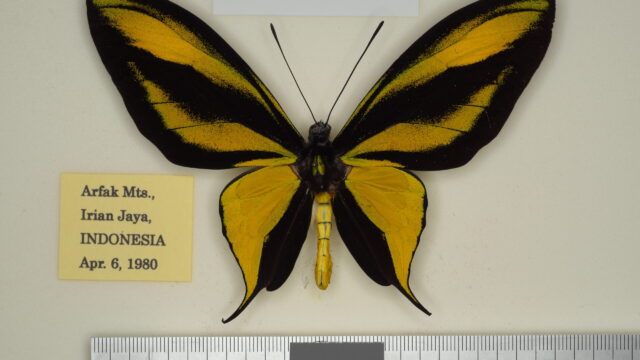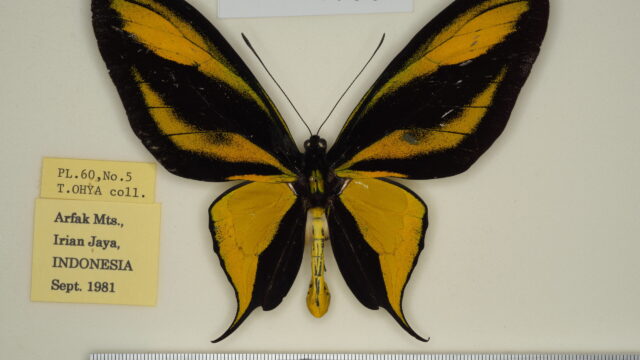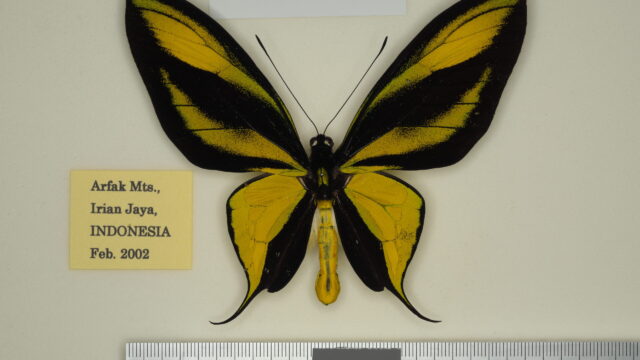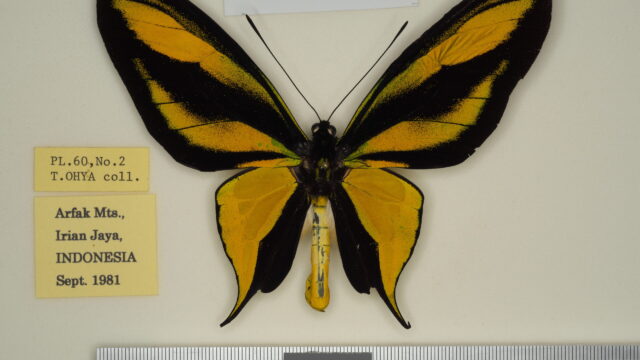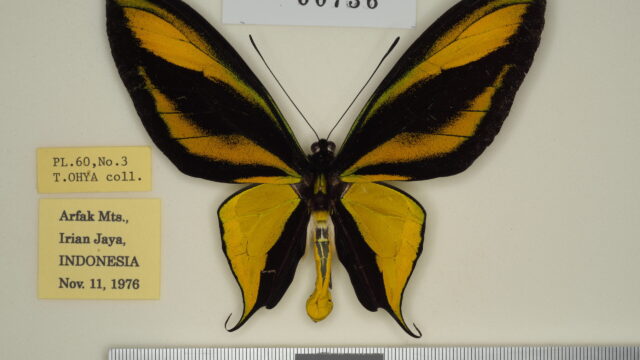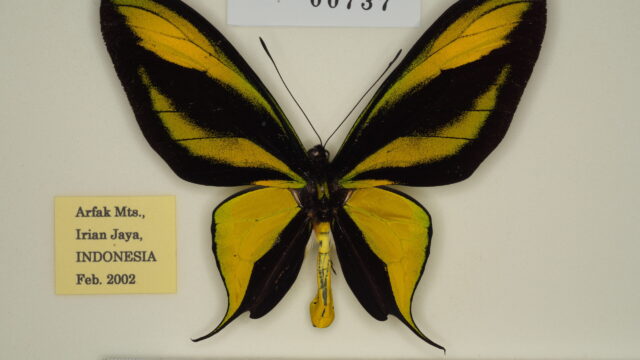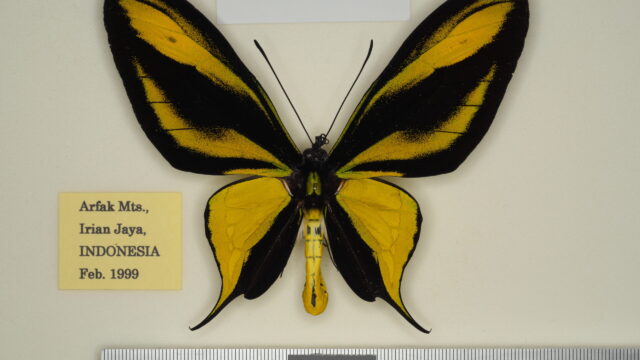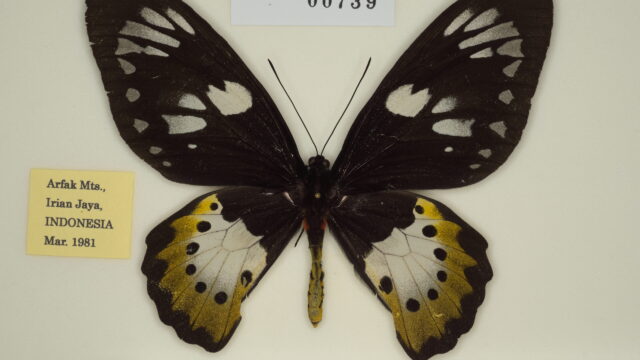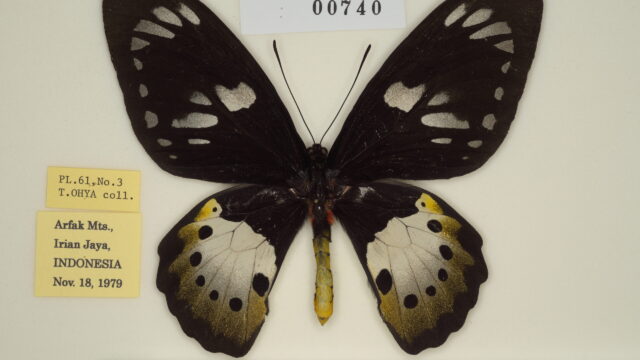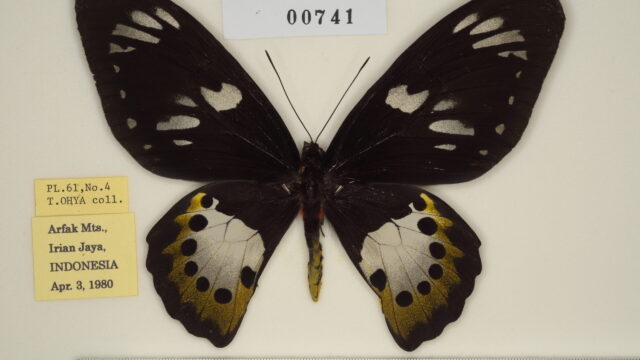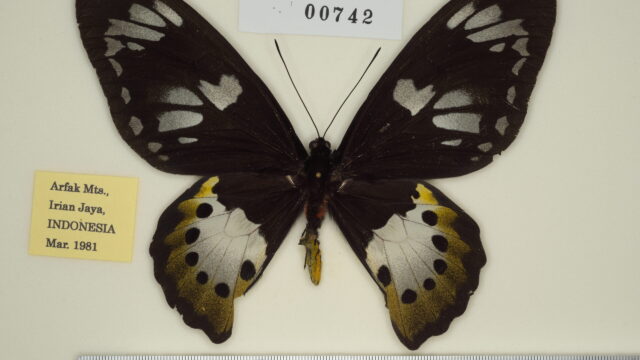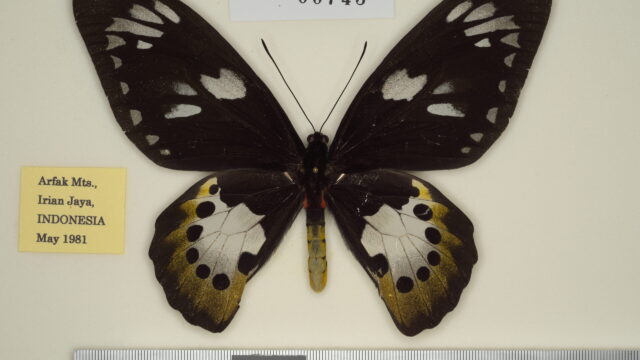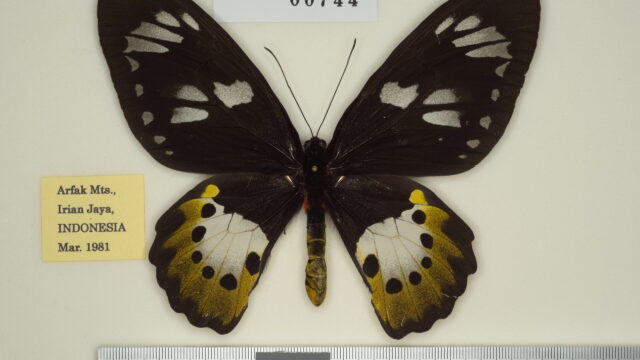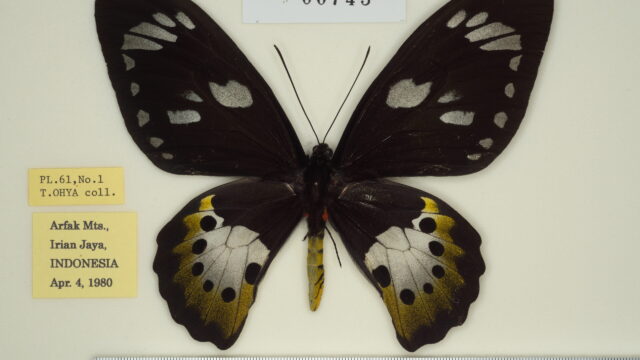1. Ssp. arfakensis (Joicey & Noakes, 1916)7) [♂, ♀]
(Distribution) [Map 33]
INDONESIA [Irian Jaya] Doberai Peninsula (Arfak Mts. (Meni, Minyambow, Anggi Gigi- Anggi Gita, Memti, Sibjo), Tamrau Mts. (Mt. Kwoka, Mt. Irau)).
(Episodes of discovery and original description)
The first specimen described by Joicey and Noakes (1915) was 2♂♂ 4♀♀. This specimen was collected by A., C., and F. Pratt between January and March 1914 at an elevation of 6000 feet near Lake Anggi (Anggi) in the Arfak Mountains region.
(Characteristics)
This is well known as a subspecies from high altitudes.
(Spotted pattern)
♂: Wing shape is rounded outer margin, and the tail is very slightly shorter in other species. On the FW, the radial band is greenish basally, but comes more yellowish subapically. The cubital band is narrower. The golden spots on HW wider than in other subspecies. The inside of basal area of the tail is characterized by its black. Femur black.
♀: They have a distinctive wing shape with rounded FW apex and elongated tonus of HW. All the spots exist and are enlarged and white in color. On the HW, pale band extends close to the base of the wing, and the dark discal spots are rounded and slightly small.
(Variation)
♂-f. oculisaureus Parrott & Deslisle, 198611): [Aberrant FW pattern] FW with a large patch of semi-translucent golden scales in space 6.
♂-f. defayettei Deslisle & Sclavo, 2008 2): [Aberrant FW pattern] FW with a red oblong patch with a blurred outline within the radial band in space 7 (sic).
♂-f. aurifluoides Haugum & Low, 19796): [FW/HW discoloration] Iridescent area of FW golden-yellow with a light orange-yellow flush, of HW yellow rather than light yellowish green.
♂-f. antoni Deslisle & Sclavo, 20154): [FW/HW discoloration] FW/HW iridescent area and golden patches are almost completely covered with red scales on both upper and undersurface.
♂-f. schencki Deslisle & Sclavo, 20123): [FW discoloration] FW iridescent green bands almost completely covered with red scales.
♂-f. gillesi Sclavo, 20123): [FW discoloration] On FW, multicolored iridescence instead of the normal bicolouration. Blue basally, gradually changing toward apex, shortly green within median area, light yellow for half of subapical with green scales the end.
♂-f. ouvaroffi Deslisle & Sclavo, 20154): [FW discoloration] The radial band almost entirely or completely discolored red.
♂-f. caudaflammeus Deslisle & Sclavo, 20154): [HW underside discoloration] Orange-red scales covered tail or space 1 basally and somewhat spread around adjacent spaces.
♀-f. pseudomeridionalis Deslisle & Sclavo, 20082): [Particular aberration] It closely resembles O. (S.) meridionalis in size and pattern but retains the characteristic of the pointed tonus on HW.
♀-f. zoeae Deslisle & Sclavo, 20123): [HW discoloration] Pale discal area (=pale band) lemon-yellow, lighter within cell and gradually becoming more densely shaded by dark scales distally.
*f. loc (?) fernandi Deslisle & Sclavo, 20123) [♂, ♀]
(Distribution) [Map 33]
INDONESIA [Irian Jaya] Yapen Is.
(Characteristics)
Described based on 2 ♂♂ and 1 ♀. Very similar to ssp. arfakensis. Future study is needed due to small number of specimens available for search.
(Spotted pattern)
♂: HW apex more acute, semi-translucent golden spots in space 4 and 5 constantly more extended.
♀: The cell-spot is short due to the spreading dark area of the base of HW. The submarginal yellow area densely shaded by black scales. Dark marginal border wider and more pronouncedly wavy. (Note: Only one pair from Supiori Is. is known, which morphologically closely resembles ssp. arfakensis.)
*f. loc. (?) wondiboiensis Deslisle, 20081) [♂, ♀]
(Distribution) [Map 33]
INDONESIA [Irian Jaya] Wasior, Wondiboi (=Wondiwoi) Mts.
(Characteristics)
Described based on 4 ♂♂ and 1 ♀. Wingspan slightly larger. Insufficient data, further research is needed.
(Spotted pattern)
♂: On FW, the radial band almost exclusively green, and not yellow subapically.
♀: FW spots are somewhat smaller and covered darkly with black scales. HW cell-spot is shorter and dark discal spots are also smaller. The yellow area of pale band is darker, and the submarginal border is broader and burred on inner side, and the boundary is indistinct.
